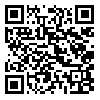BibTeX | RIS | EndNote | Medlars | ProCite | Reference Manager | RefWorks
Send citation to:
URL: http://tumj.tums.ac.ir/article-1-556-en.html
Background: Multislice computed tomography (MSCT) is a noninvasive method of detecting coronary artery disease (CAD). The purpose of the present study was to investigate the accuracy of 64-slice MSCT (64-MSCT) in daily practice, without patient selection.
Methods: Sixty-four consecutive suspected CAD patients underwent both 64-MSCT and quantitative coronary angiography (QCA). The CT system The mean time span between MSCT and QCA was 7.2±3.9 days. For the 64-MSCT, detection or exclusion of CAD, defined as one or more areas of >50% stenosis within major epicardial coronary arteries, the sensitivity, specificity, diagnostic accuracy, positive predictive value (PPV), and negative predictive value (NPV) were evaluated both per patient and per segment.
Results: Sixty-one of the 64 coronary CT angiograms (95%) were of diagnostic image quality. QCA showed significant CAD in 64% (39/61) of the patients, with the other 36% (22/61) showing nonsignificant disease or no disease. Sensitivity, specificity, accuracy, PPV, and NPV of 64-MSCT per patient were 92%, 86%, 90%, 92% and 96%, respectively. By the per-segment analysis, 695 of 791 coronary artery segments were assessable (88%). Of these, 64-MSCT showed a sensitivity of 80%, specificity of 92%, accuracy of 90%, PPV of 65%, and NPV of 96%, respectively, in detecting CAD.
Conclusions: Both per patient and per segment analyses for coronary 64-MSCT showed a higher diagnostic accuracy than QCA. This suggests 64-MSCT should primarily be used for risk stratification on a per patient basis as a noninvasive gate-keeper diagnostic method.
| Rights and permissions | |
 |
This work is licensed under a Creative Commons Attribution-NonCommercial 4.0 International License. |





